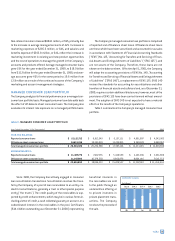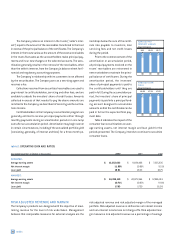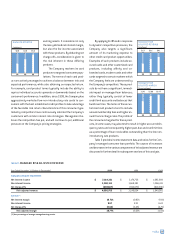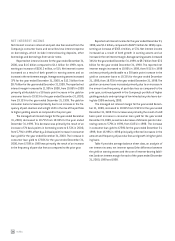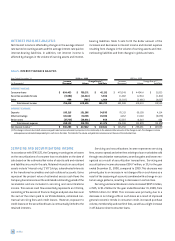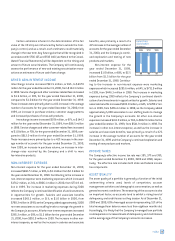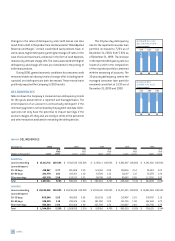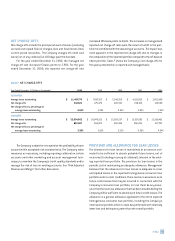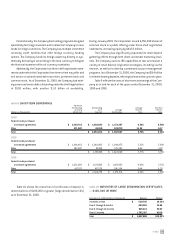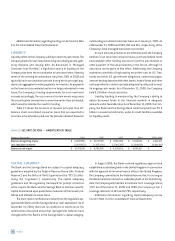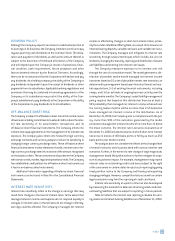Capital One 2000 Annual Report Download - page 29
Download and view the complete annual report
Please find page 29 of the 2000 Capital One annual report below. You can navigate through the pages in the report by either clicking on the pages listed below, or by using the keyword search tool below to find specific information within the annual report.
earning assets. It considers not only
the loan yield and net interest margin,
but also the fee income associated
with these products. By deducting net
charge-offs, consideration is given to
the risk inherent in these differing
products.
The Company markets its card
products to targeted consumer popu-
lations. The terms of each card prod-
uct are actively managed to achieve a balance between risk and
expected performance, while also obtaining our expected return.
For example, card product terms typically include the ability to
reprice individual accounts upwards or downwards based on the
consumer's performance. In addition, since 1998, the Company has
aggressively marketed low non-introductory rate cards to con-
sumers with the best established credit profiles to take advantage
of the favorable risk return characteristics of this consumer type.
Industry competitors have continuously solicited the Company's
customers with similar interest rate strategies. Management be-
lieves the competition has put, and will continue to put, additional
pressure on the Company's pricing strategies.
By applying its IBS and in response
to dynamic competitive pressures, the
Company also targets a significant
amount of its marketing expense to
other credit card product opportunities.
Examples of such products include se-
cured cards and other customized card
products, including affinity and co-
branded cards, student cards and other
cards targeted to certain markets which
the Company feels are underserved by
the Company's competitors. These prod-
ucts do not have a significant, immedi-
ate impact on managed loan balances;
rather they typically consist of lower
credit limit accounts and balances that
build over time. The terms of these cus-
tomized card products tend to include
annual membership fees and higher an-
nual finance charge rates. The profile of
the consumers targeted for these prod-
ucts, in some cases, may also tend to result in higher account delin-
quency rates and consequently higher past-due and overlimit fees
as a percentage of loan receivables outstanding than the low non-
introductory rate products.
Table 3 provides income statement data and ratios for the Com-
pany's managed consumer loan portfolio. The causes of increases
and decreases in the various components of risk adjusted revenue are
discussed in further detail in subsequent sections of this analysis.
md&a 27
table 3: MANAGED RISK ADJUSTED REVENUE
Year Ended December 31 (Dollars in Thousands) 2000 1999 1998
MANAGED INCOME STATEMENT:
Net interest income $ 2,614,321 $ 2,174,726 $ 1,692,894
Non-interest income 2,360,111 1,668,381 1,066,413
Net charge-offs (883,667) (694,073) (810,306)
Risk adjusted revenue $ 4,090,765 $ 3,149,034 $ 1,949,001
RATIOS:(1)
Net interest margin 10.71% 10.83% 9.91%
Non-interest income 9.67 8.31 6.24
Net charge-offs (3.62) (3.45) (4.74)
Risk adjusted margin 16.77% 15.69% 11.41%
(1) As a percentage of average managed earning assets.










